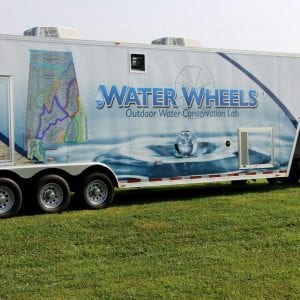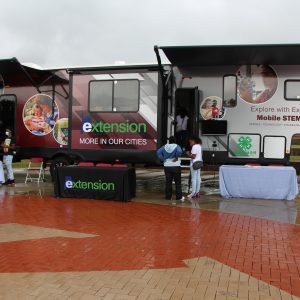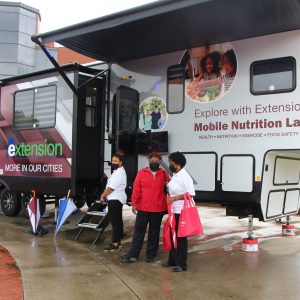Business & Community

One of the greatest contributions to Cooperative Extension was the Jesup Agricultural Wagon. The Jesup Agricultural Wagon was first used by noted Tuskegee Institute scientist and teacher George Washington Carver in 1906. It was a mobile classroom that allowed Carver to teach farmers and sharecroppers how to grow crops, such as sweet potatoes, peanuts, soybeans, and pecans.
The wagon’s name originates from Morris Jesup, a New York banker, who financed the project. However, it was Carver himself who designed the wagon, selected the equipment, and developed the lessons for farmers. The earlier model was a horse-drawn carriage that was later replaced by a mobile truck. Regardless of how it ran, this successful outreach model was widely adopted by the United States Department of Agriculture. Mobile vehicles continue to be modeled today by organizations like the Alabama Cooperative Extension System.
Modern-Day Jesup Wagons
Today, Alabama Extension at Alabama A&M University (AAMU) uses three modern-day Jesup wagons for educational purposes. The Water Wheels Mobile Conservation Laboratory (Water Wheels), the Mobile STEM Lab, and the Mobile Nutrition Lab.
- Water Wheels Lab
- Mobile STEM Lab
- Mobile Nutrition Lab
Water Wheels
Water Wheels is a 36-foot water conservation laboratory that comes equipped with gaming computers, a rainwater collection and disbursement system, and other educational resources. The mobile lab travels across the state to educate Alabama residents about the importance of water conservation. People learn about such topics as watersheds, water pollution, and how to install a rainwater collection system.
Mobile STEM Lab
The Mobile STEM Lab introduces real-world, hands-on learning experiences in science, technology, engineering, and mathematics to youth ages 5 to 18.
Mobile Nutrition Lab
The Mobile Nutrition Lab is used to educate youth and adults about proper nutrition and the importance of physical activity, hand washing, and food safety practices.
The Value of Mobile Vehicles
Whether in the past or in modern-day settings, mobile vehicles allow for greater interaction between Extension educators and participants. Participants also receive immediate hands-on training that can be applied in their daily lives.
George Washington Carver probably had no idea that he would not only change the course of agricultural history but Alabama Extension history as well. This invention is a perfect example of how land-grant universities like Auburn, Tuskegee, and Alabama A&M fulfill the three-fold mission of research, teaching, and Extension.
More Information
Contact Extension specialist Rudy Pacumbaba for more information about Water Wheels. Contact Extension Specialist Andrea Morris about the Mobile Nutrition Lab, and Extension Specialist Angela Williams about the Mobile STEM Lab.
Featured Image: Courtesy of the Encyclopedia of Alabama; used with permission of Tuskegee University




